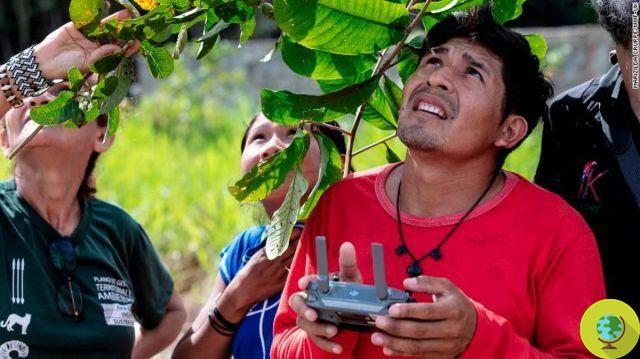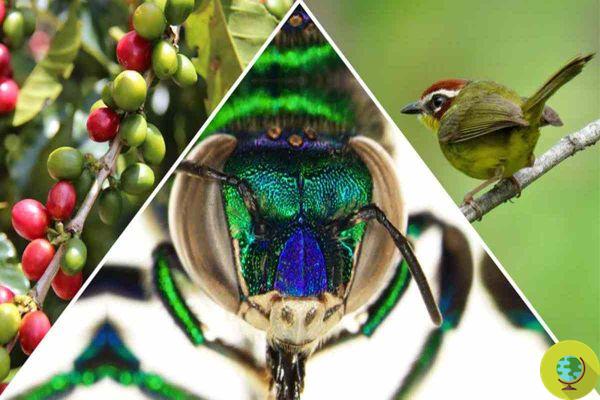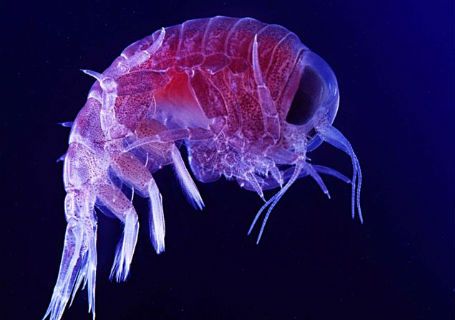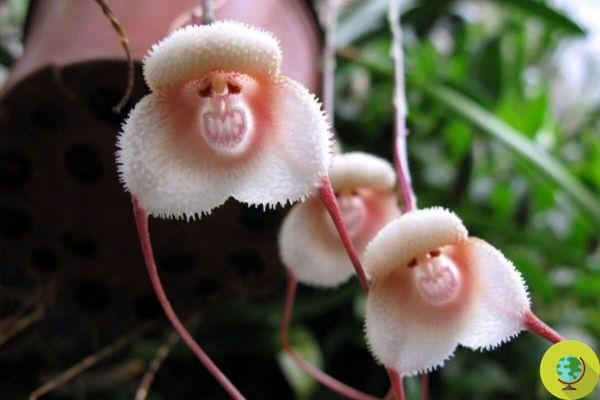During the lockdown we can take advantage of the time to observe and report many species of birds from our balconies, terraces and gardens
He is about to end up run over, his mother saves himDuring these long weeks of lockdown you may have noticed the incessant chirping outside the windows: while we are still closed in our homes due to the coronavirus, hundreds of little birds they are enjoying this wonderful spring.
We can hear them from ours balconies, terraces and gardens and we can also observe them, identify them and report their presence, contributing to the citizen science project #vistidacasa, promoted by Lipu in collaboration with various ornithological associations.
The initiative is simple, fun and useful: to participate it is enough stand on balconies, terraces or in the garden and observe nature for a period of between 20 and 60 minutes. Armed with binoculars, paper and pen, it is then necessary to take note of the species of birds seen in order to be able enter the report on the platform ornitho.com or through the NaturaList android smartphone app.
“By staying under observation for a long enough time it is possible to better grasp the details, the behavior and even the interactions between species. During the counts, to avoid overestimating the number of specimens of a species, we recommend noting the maximum number of subjects seen at the same time ”, explained the head of Species and Research of Lipu, Marco Gustin.
What are the birds that we can observe in this period? As Gustin says:
“In these days, and in the coming weeks, it is possible to observe a large number of active species in the area, such as goldfinch, redstart, serin, blackcap, swallows, house martins, swifts and many others, both migratory and sedentary. A heritage of sightings that deserves to be registered and shared in a large database such as Ornitho ”.
Let us then try to learn more about these species, to recognize them during birdwaching from balconies, terraces and gardens
Index
The goldfinch
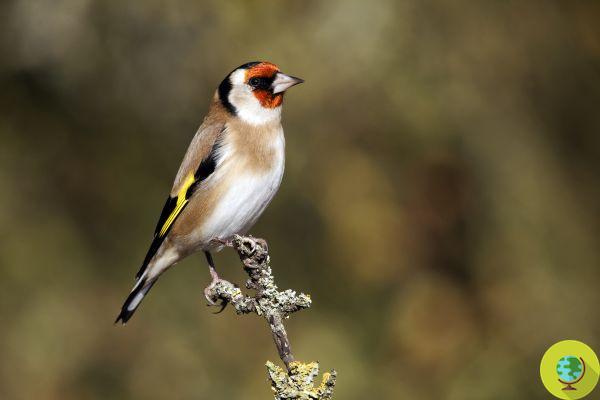
Ernie / Shutterstock
Il goldfinch (Carduelis carduelis) is a small passerine bird, which belongs to the Finch family. It has a rounded head, large eyes and a conical and pointed beak, but its main feature that makes it recognizable is the red mask present on the garment.
The redstart
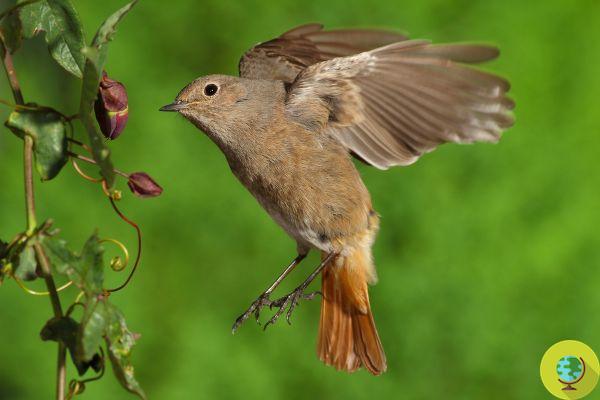
Antonio Guillem/Shutterstock
Il redstart (Phoenicurus phoenicurus) is a passerine bird of the Turdidae family, which normally lives on the edges of the forests but which is not rare to find in urban and inhabited areas, especially in the northern and central regions.
Il distinctive featureo of this little bird is the rust-brown colored tail that is constantly moving even when it rests.
The serin
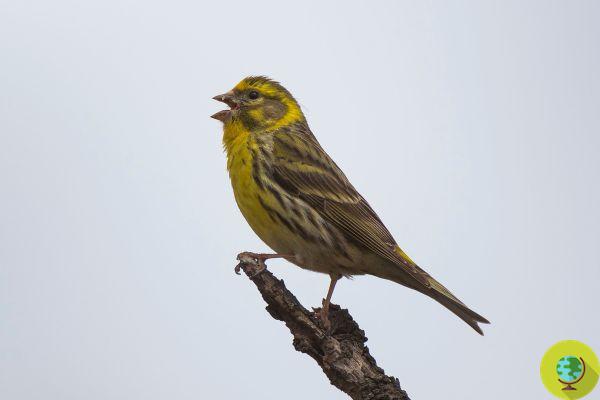
Jesus Cobaleda/Shutterstock
Il serin it is another small bird belonging to the Fringillidi family and common in the plains and in the hilly areas.
It can be recognized by the typical color of the yellow-green feathers and striped with brown or black in both sexes. The female, however, has a paler color and a smaller amount of yellow, while the young specimens have reddish feathers.
The blackcap
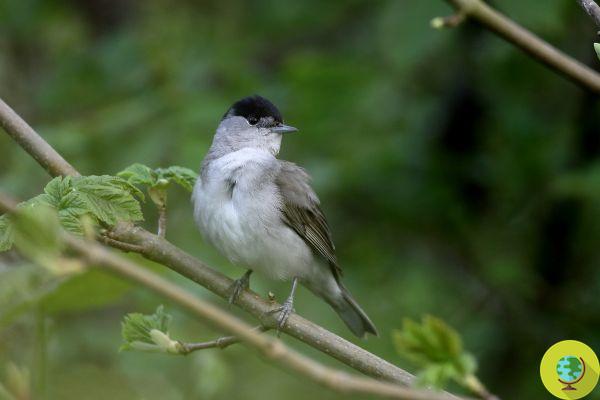
Ernie / Shutterstock
La blackcap (Sylvia atricapilla) is a lively and sociable species that belongs to the Sylviidae family and is present everywhere on our Peninsula.
Specimens of this species are well recognizable thanks to the well-defined shell, black in males and rusty red in females.
The swallow
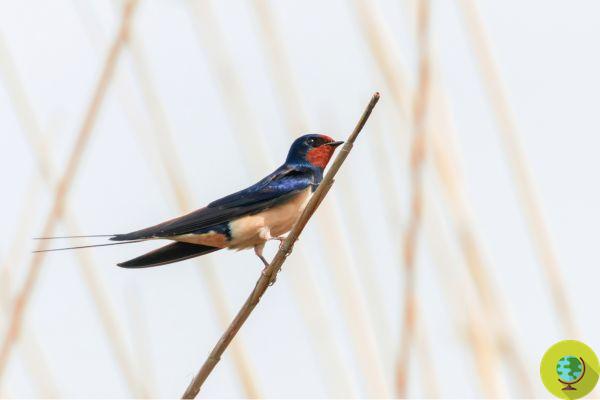
Allexxandar/Shutterstock
La swallow (Hirundo rustica) is a particularly species used to living in urban contexts and nest near homes, building nests of mud and grass in the spring.
It is a small migratory bird that can reach 19 centimeters in length, with dark blue plumage on the grayish back on the belly; forehead and throat are dark orange. The swallow is recognizable above all thanks to the long and deeply forked tail.
The Swift
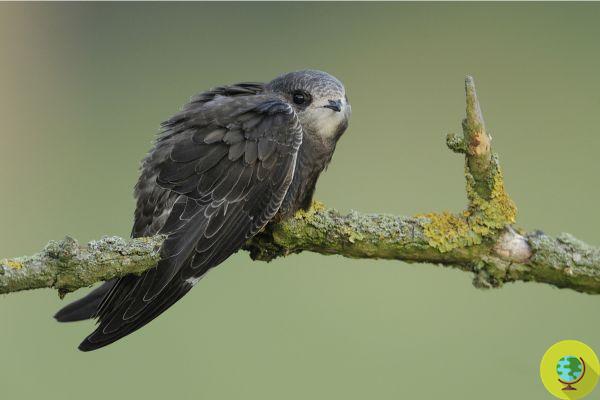
CezaryKorkosz / Shutterstock
Il swift (Apus apus) is a species belonging to the Apodidae family, whose name derives from the Greek apous, "without feet".
The swift has indeed particularly short legs that do not allow him to touch the ground and take off from the ground.
Compared to the swallow, the swift is somewhat longer but has a shorter tail and uniform black or brown plumage with some mottling.
The martin
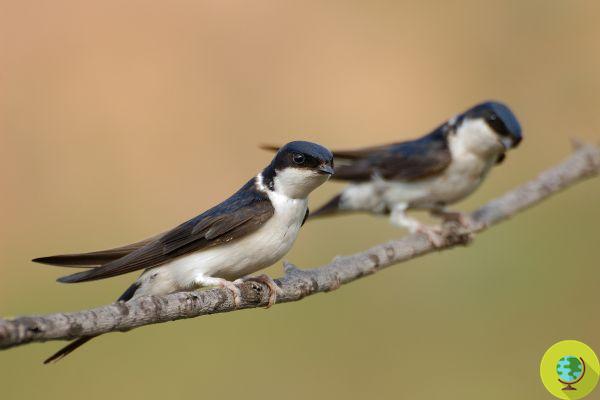
Ryzhkov Sergey/Shutterstock
Il house martin (Delichon urbicum) is a very common migratory bird in urban environments, as it often nests at the corners of the roofs in the eaves, building small cup-shaped nests.
This bird belongs to the Hirundinidae family, the same as the swallows it resembles, with its black plumage on the back and white colored on the throat, belly and rump.
Unlike swallows, however, the martin is smaller and has a less forked tail.
In addition to wild birds, on the platform you can also report amphibians, butterflies, beetles and other animals observed in their gardens, terraces and balconies.
Sources of reference: Lipu / Birds to be protected
Read also:
- With these plants, you can attract baby birds to the garden and feed them with their seeds
- Birdwatching from the balcony or the window: in France the League for the protection of birds is launching the challenge
- 10 bird feeders with recycled materials
- Sociable weaver, the “architect” birds who build the largest and most complex nests in the world











